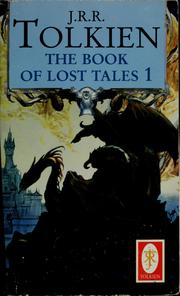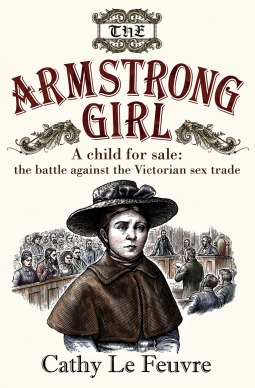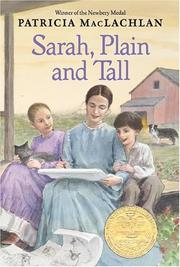Board books:
- Board Book: Five Little Monkeys: A finger & toes nursery rhyme book. Natalie Marshall. Scholastic. 2015. 12 pages. [Source: Review copy]
- Board Books: Picture This: Homes. Houghton Mifflin Harcourt. 2015. 42 pages. [Source: Review copy]
- Board books: Picture This: Shapes. Houghton Mifflin Harcourt. 2015. 40 pages. [Source: Review copy]
- Board book: Little Blue Truck's Beep-Along Book. Alice Schertle. Illustrated by Jill McElmurry. 2015. Houghton Mifflin Harcourt. 8 pages. [Source: Review copy]
- Board book: Carry and Learn Numbers. Illustrated by Sarah Ward. 2015. Scholastic. 10 pages. [Source: Review copy]
- Gingerbread for Liberty: How A German Baker Helped Win the American Revolution. Mara Rockliff. Illustrated by Vincent X. Kirsch. 2015. Houghton Mifflin Harcourt. 32 pages. [Source: Review copy]
- Poppy's Best Paper. Susan Eaddy. Illustrated by Rosalinde Bonnet. 2015. Charlesbridge. 40 pages. [Source: Review copy]
- How To Catch a Mouse. Philippa Leathers. 2015. Candlewick. 40 pages. [Source: Review copy]
- Alphabet Trains. Samantha R. Vamos. Illustrated by Ryan O'Rourke. 2015. Charlesbridge. 32 pages. [Source: Review copy]
- Funny Face, Sunny Face. Sally Symes. Illustrated by Rosalind Beardshaw. 2015. Candlewick. 32 pages. [Source: Review copy]
- The Big Princess. Taro Miura. 2015. Candlewick Press. 40 pages. [Source: Review copy]
- Mom School. Rebecca Van Slyke. Illustrated by Priscilla Burris. 2015. Random House. 32 pages. [Source: Review copy]
- The Foot Book. Dr. Seuss. 1968. Random House. 36 pages. [Source: Library]
- I Can Lick 30 Tigers Today And Other Stories. Dr. Seuss. 1969. HarperCollins. 64 pages. [Source: Library]
- Mr. Brown Can Moo! Can You? Dr. Seuss. 1970. HarperCollins. 32 pages. [Source: Library]
- The Lorax. Dr. Seuss. 1971. Random House. 72 pages. [Library]
- Out and About: A First Book of Poems. Shirley Hughes. 1988/2015. Candlewick Press. 56 pages. [Source: Review copy]
- Over the Hills and Far Away: A Treasury of Nursery Rhymes. Edited by Elizabeth Hammill. 2015. Candlewick. 160 pages. [Source: Review copy]
- Pete The Cat's Train Trip (I Can Read) James Dean. 2015. HarperCollins. 32 pages. [Source: Library]
- Henry and Mudge and the Happy Cat. (Henry and Mudge #8) Cynthia Rylant. Sucie Stevenson. 1990. Simon & Schuster. 48 pages. [Source: Bought]
- Sarah, Plain and Tall. Patricia MacLachlan. 1985. Houghton Mifflin. 64 pages. [Source: Library]
- Hatchet. Gary Paulsen. 1986. Simon & Schuster. 208 pages. [Source: Library]
- On My Honor. Marion Dane Bauer. 1986. Houghton Mifflin Harcourt. 96 pages. [Source: Review copy]
- Cinderella Smith. Stephanie Barden. Illustrated by Diane Goode. 2011. HarperCollins. 160 pages. [Source: Review copy]
- At The Back of the North Wind. George MacDonald. 1871. 346 pages. [Source: Bought]
- Miss Patch's Learn-to-Sew Book. Carolyn Meyer. 1969/2014. Houghton Mifflin Harcourt. 96 pages. [Source: Review copy]
- Close to the Wind. Jon Walter. 2015. Scholastic. 304 pages. [Source: Review copy]
- First Flight Around The World: The Adventures of the American Fliers Who Won The Race. Tim Grove. 2015. Abrams. 96 pages. [Source: Review copy]
- The Polar Bear Scientists. Peter Lourie. 2012/2015. Houghton Mifflin Harcourt. 80 pages. [Source: Review copy]
- Wish Girl. Nikki Loftin. 2015. Penguin. 256 pages. [Source: Library]
- Lost in the Sun. Lisa Graff. 2015. Penguin. 304 pages. [Source: Library]
- The Great Good Summer. Liz Garton Scanlon. 2015. Simon & Schuster. 224 pages. [Source: Library]
- My Brother's Secret. Dan Smith. 2015. Scholastic. 304 pages. [Source: Review copy]
- Phantoms in the Snow. Kathleen Benner Duble. 2011. Scholastic. 240 pages. [Source: Review copy]
- To All The Boys I've Loved Before. Jenny Han. 2014. Simon & Schuster. 288 pages. [Source: Library]
- All We Have Is Now. Lisa Schroeder. 2015. Scholastic. 272 pages. [Source: Review copy]
- Fat Cat. Robin Brande. 2009. Random House. 330 pages. [Source: Library]
- The Messengers. Edward Hogan. 2015. Candlewick Press. 224 pages. [Source: Review copy]
- Apple and Rain. Sarah Crossan. 2015. Bloomsbury. 352 pages. [Source: Review copy]
- The Daughter of Time. Josephine Tey. 1951/1995. Simon & Schuster. 208 pages. [Source: Bought]
- The Children of Hurin. J.R.R. Tolkien and Christopher Tolkien. 2007. HarperCollins. 313 pages. [Source: Library]
- The Book of Lost Tales. J.R.R. Tolkien. 1983/1992. 345 pages. [Source: Library]
- A Duty To The Dead. (Bess Crawford #1) Charles Todd. 2009. HarperCollins. 336 pages. [Source: Library]
- An Impartial Witness. Charles Todd. 2010. HarperCollins. 352 pages. [Source: Library]
- Ross Poldark. (Poldark #1) Winston Graham. 1945/2015. Sourcebooks. 400 pages. [Source: Review copy]
- The Truth According to Us. Annie Barrows. 2015. Dial. 512 pages. [Source: Library]
- The Prestige. Christopher Priest. 1995/1997. Tor. 360 pages. [Source: Library]
- The Armstrong Girl: A Child for Sale: The Battle Against the Victorian Sex Trade. Cathy Le Feuvre. 2015. Lion. 224 pages. [Source: Review copy]
- To Capture Her Heart. Rebecca DeMarino. 2015. Revell. 368 pages. [Source: Review copy]
- The Innocent. Ann H. Gabhart. 2015. Revell. 400 pages. [Source: Review copy]
- Stronger. Clayton King. 2015. Baker Books. 208 pages. [Source: Review copy]
- Knowing God. J.I. Packer. 1973/1993. Intervarsity Press. 286 pages. [Source: Bought]
- Pass It On. Jim Burns & Jeremy Lee. David C. Cook. 224 pages. [Source: Review copy]
- The Shaping of a Christian Family. Elisabeth Elliot. 1992/2000. Revell. 240 pages. [Source: Borrowed]
- Living in the Grip of Relentless Grace. Iain M. Duguid. 2015. P&R. 192 pages. [Source: Review copy]
- The End of Me. Kyle Idleman. 2015. David C. Cook. 240 pages. [Source: Review copy]
- Transforming Grace. Jerry Bridges. 1991. NavPress. 207 pages. [Source: Borrowed]
- Embracing Obscurity. Anonymous. 2012. B&H. 192 pages. [Source: Borrowed]
- Humility. C.J. Mahaney. 2005. Multnomah. 176 pages. [Source: Borrowed]
- Uncensored: Daring to Embrace the Entire Bible. Brian Cosby. 2015. David C. Cook. 208 pages. [Source: Review copy]






